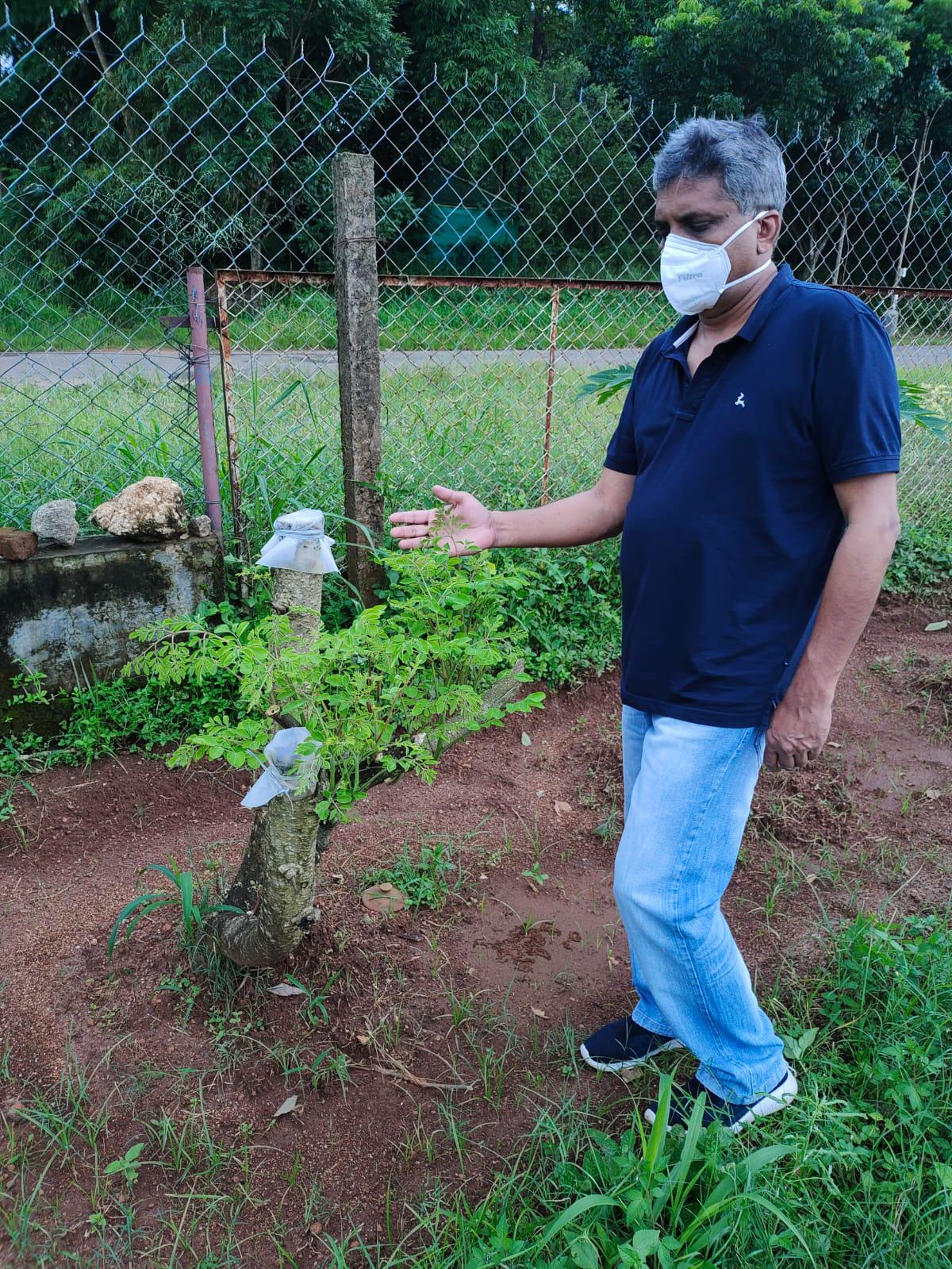Karkkadakam, the last month of the Malayalam calendar (July-August) when rains lash Kerala, has been rebranded as the season of wellness and rejuvenation. It is promoted as the period best suited for sukhachikitsa or rejuvenation therapy as per Ayurveda tradition to develop immunity and stay healthy. Not just humans, even jumbos undergo sukhachikitsa during this time.
But do you know that it is the right time to give sukhachikitsa to plants as well? “It only means that they should be pruned and nourished with nutrients during this period. Pruning is necessary for plants and most fruit-bearing trees for their healthy growth and better yield. We have to do it once the monsoon becomes strong,” says T Pradeep Kumar, professor and head, Department of Vegetable Science, and director of planning, Kerala Agricultural University. His department has been doing it every year for the plants grown on the campus, especially curry leaf and drumstick.
Pruned curry leaf plants on the campus of Department of Vegetable Science, Kerala Agricultural University, Thrissur
| Photo Credit: SPECIAL ARRANGEMENT
Curry leaf plants are grown on the median along the road leading to the department and inside the campus. “Earlier, there used to be bougainvillaea. But in 2015, we replaced them with curry leaf,” Pradeep says. The current batch of plants were pruned a few weeks ago.
“Pruning involves cutting the branches so that the plant is one metre high from the ground level. In addition, the area around the root of the plant (basin) is dug up and fresh cow dung is applied. This results in bushy growth with plenty of leaves,” he says.
Usually the cuttings are dumped in a compost pit on the campus. But this year they were collected by the Vaidyaratnam Ayurvedic pharmaceutical group. “This is a first for us. The cuttings and leaves are used in the preparation of various Ayurvedic medicines. The moisture content from the cuttings was removed using a dehumidifier before we handed them over,” he says.
Pradeep observes that pruning of curry leaf plants rarely happens in homesteads. “We don’t bother to do it and thus the plants grow tall to become trees and then it becomes difficult to pluck the leaves,” he adds.

T Pradeep Kumar with a pruned drumstick plant from which new shoots are emerging
| Photo Credit: SPECIAL ARRANGEMENT
In the case of the drumstick, they are pruned to table-top height and organic manure is applied. “This conserve the moisture which helps in the initiation of new roots, and in turn, to the sprouting of new shoots. We re-plant the cuttings for propagation,” he says. If they are not pruned, the plants grow tall with multiple branches and few leaves. Since flowering happens near the branches, harvesting becomes difficult.
For better yield
Except for papaya, pruning is advised for most of the fruit-bearing trees. According to Dr Sarada S, assistant professor and head, Department of Vegetable Science, College of Agriculture at Vellayani in Thiruvananthapuram, pruning is beneficial for perennial varieties, especially fruit-bearing trees such as mango, guava and pomegranate. “Pruning stimulates the formation of stems, leaves and roots before the plant develops flowers, fruits and seeds. In the case of mango, especially grafted varieties, pruning helps in vigorous growth,” she says. She points out that pruning ensures a better yield for those farmers growing drumstick plants for harvesting leaves. Also, since the plants are not allowed to grow tall, they can cultivate more plants in the available area.
























